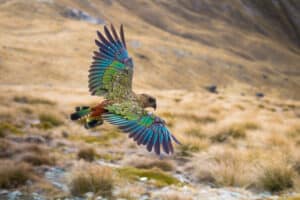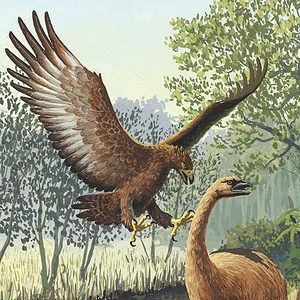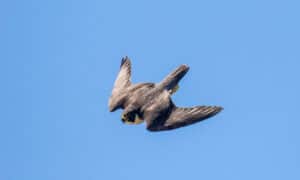The word “fowl” was once used to describe any bird species, but today the term is more specific. It describes birds in the Galliformes and Anseriformes orders, which include waterfowl, game fowl, and land fowl. Typically, farmers raise fowl for meat, eggs, and feathers. Discover nine types of fowl birds and learn about their appearance, diet, and habitats.
Chickens
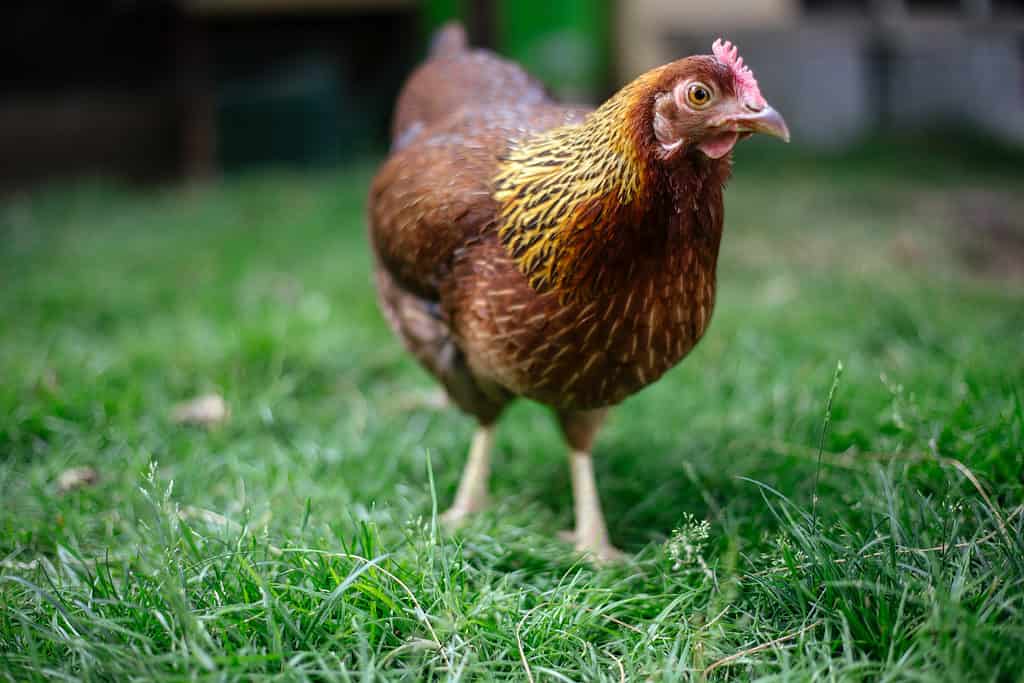
Domestic chickens are one of the most widespread domesticated animals in the world, numbering almost 24 billion.
©Katrin Friedl Fotografie/Shutterstock.com
The domestic chicken is a species of junglefowl from Southeast Asia, with ancestry dating back six million years ago. Chickens often roam farms and homesteads where farmers breed them for meat and eggs. However, some people keep chickens as pets! They are one of the most widespread domesticated animals in the world, numbering almost 24 billion. They are gregarious birds, living in flocks and communally incubating their eggs. While most chickens live in captivity, these birds prefer areas with open canopies and underlying shrubs. They are omnivores and their diet usually consists of fruits, vegetables, grains, and table scraps.
Ducks
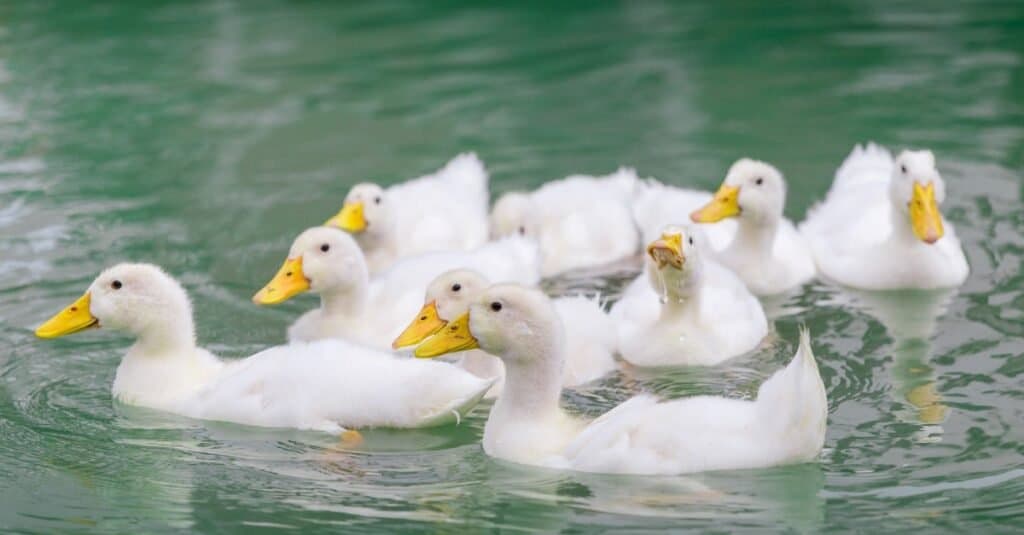
They are primarily aquatic birds and inhabit both freshwater and saltwater.
©iStock.com/kunchainub
“Duck” is a generic term for many species of waterfowl belonging to the same family as swans and geese, except they are smaller and shorter-necked. They are primarily aquatic birds and inhabit both freshwater and saltwater. Ducks are domesticated and wild and live on every continent except Antarctica. Many species in warmer locations are permanent residents, but those in the Northern Hemisphere migrate for the winter. These birds have a wide-ranging diet, including aquatic plants, grasses, insects, fish, amphibians, worms, and mollusks.
Geese
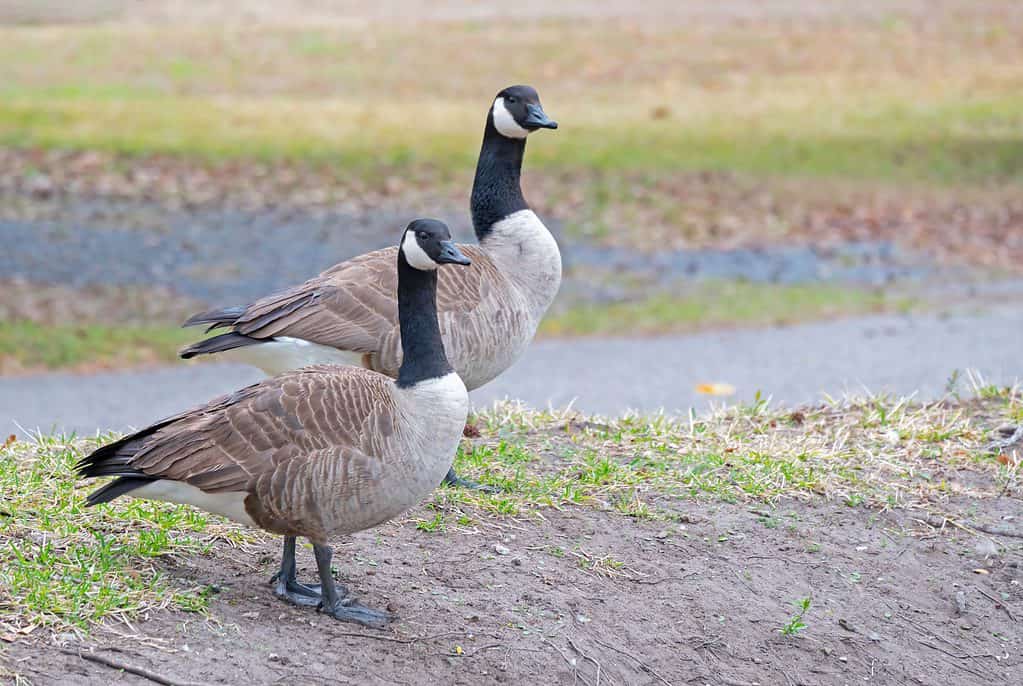
Geese are found both in captivity and in the wild, often forming permanent pairs. These birds typically live in areas around water.
©Daniel Wright98/Shutterstock.com
A goose can refer to several waterfowl species (snow goose, Canada goose, etc.) in the Anatidae family. These birds live in captivity and in the wild, often forming permanent pairs. As those who’ve ever crossed paths with a protective mother goose know, these birds are territorial during the nesting season. They migrate in response to food and water supply, creating V-shaped formations when they fly. Geese typically live in areas around water, such as ponds, marshes, and lakes. You can also find them on golf courses, school grounds, and other urban and suburban areas.
Turkeys
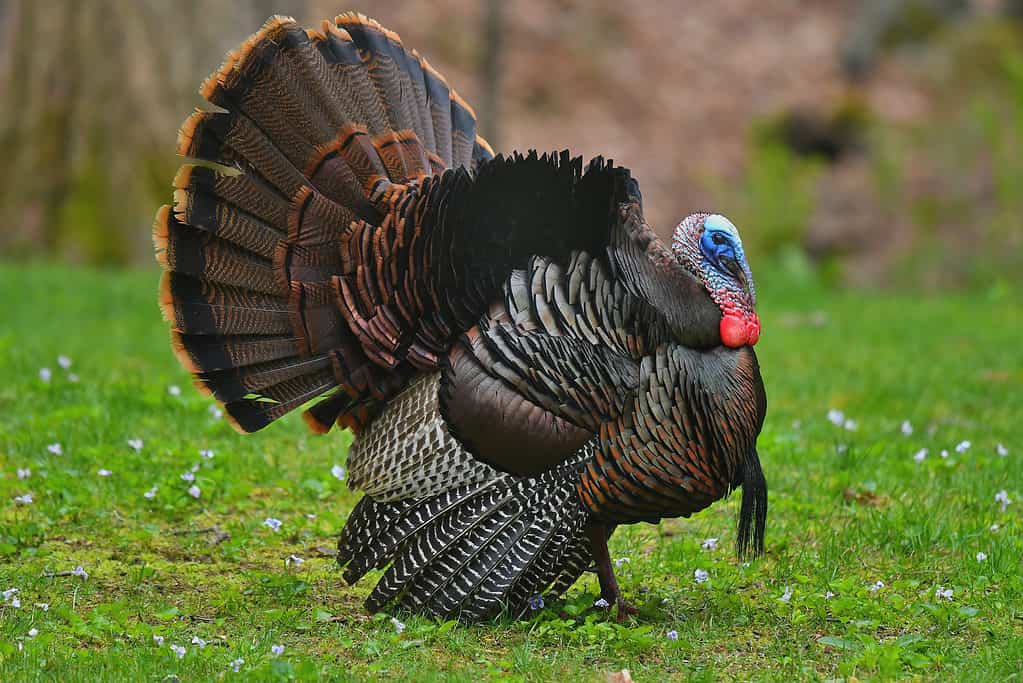
Domesticated turkeys live their lives on farms, but wild turkeys inhabit forests, mountains, woods, swamps, and grasslands.
©iStock.com/Robert Winkler
Turkeys are large ground-dwelling birds native to North America. They are among the largest birds in their range and feature a fleshy wattle that hangs from the top of their beaks. They belong to the Galliformes order and are close relatives to the grouse. The indigenous peoples of North America bred wild turkeys, and the earliest recorded fossils are 20 million years old. Domesticated turkeys live their lives on farms, but wild turkeys inhabit forests, mountains, woods, swamps, and grasslands. These birds eat fruits, nuts, plant matter, seeds, and insects.
Swans
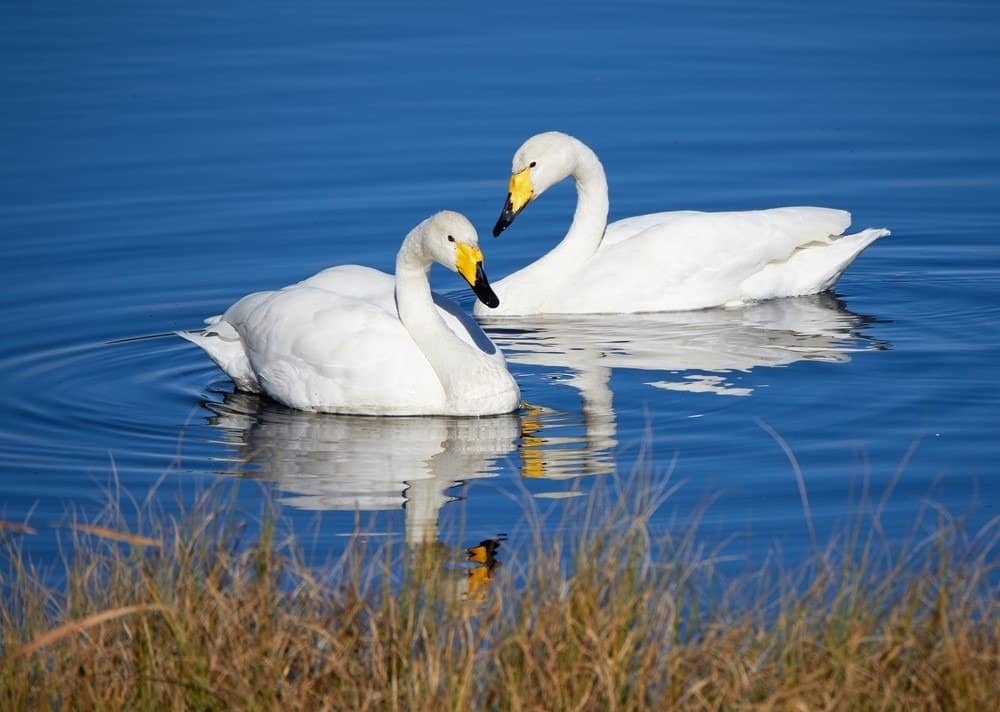
These elegant birds live in temperate environments, inhabiting ponds, lakes, slow-moving rivers, and marshes.
©Teemu Tretjakov/Shutterstock.com
Swans are another group of waterfowl closely related to ducks and geese. There are six living swan species and many more that are extinct. These birds are popular for their elegant stature and preference for mating for life, only taking up with another if their long-term mate dies. Swans live in temperate environments, typically avoiding the tropics. You are more likely to find these birds in the wild than in captivity. They inhabit ponds, lakes, slow-moving rivers, and marshes. They mainly consume aquatic vegetation but also eat mollusks, fish, frogs, and worms.
Guineafowls
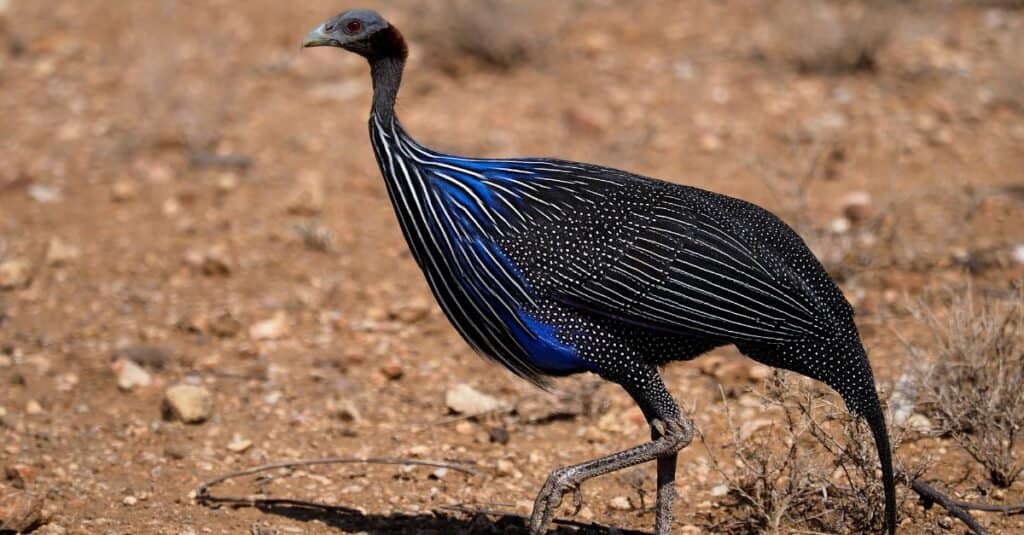
Guineafowl typically spend their days traveling behind herd animals, eating pest species, like ticks, locusts, and other invertebrates.
©Erni/Shutterstock.com
Guineafowl is endemic to Africa and is among the oldest in the Galliformes order. They have been introduced to most other parts of the world as domestic fowl birds. In the United States, they live on farms and homesteads, where farmers process them for their meat and eggs. Their meat is firmer and leaner than chicken meat but it has a stronger gamey flavor. These ground-nesting birds eat insects and seeds and are typically monogamous. They spend their days traveling behind herd animals, eating pest species, like ticks, locusts, and other invertebrates. Guineafowls in the wild are strong fliers, sustaining themselves in the air for considerable distances when fleeing predators. In their Sub-Saharan African environment, they live in savannas, semi-deserts, and forests.
Quails
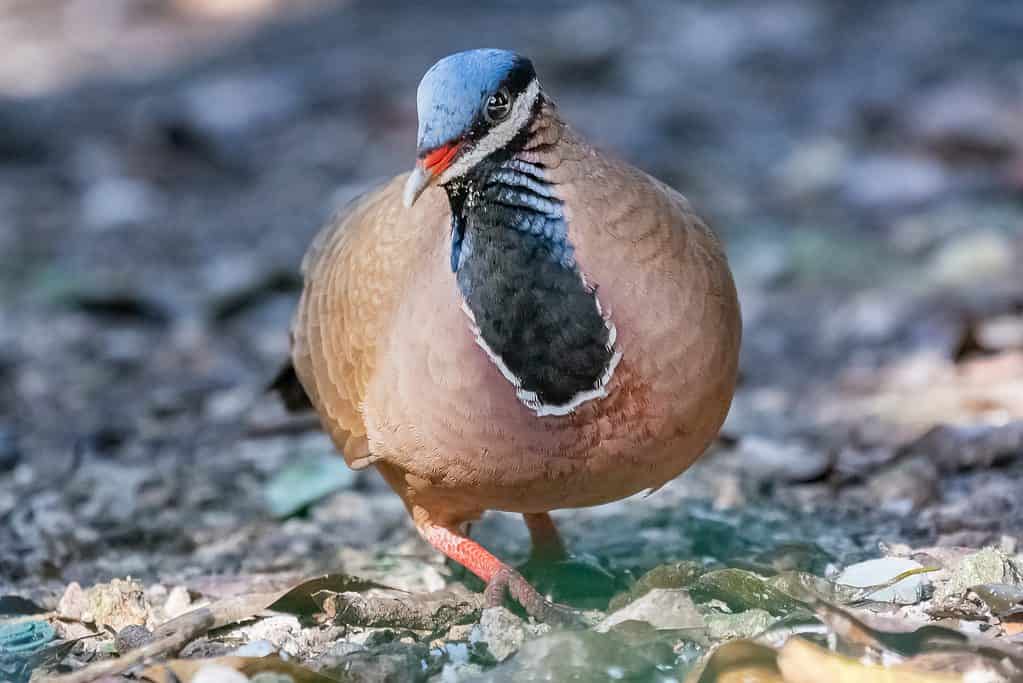
You can find quail in the wild, but people also keep them in captivity and raise them for meat and eggs.
©Piotr Poznan/Shutterstock.com
The quail is a medium-sized bird in the Galliformes order, and you can identify them by their mottled plumage and top knots on their heads. You can find quail in the wild, but people also keep them in captivity and raise them for meat and eggs. Those in the wild inhabit woodlands, croplands, grasslands, and farmlands. Many are bred to live on game farms, specifically for people to hunt them. To increase their wild population, many farms and homesteads breed them to release them into their natural habitats. These birds are omnivores and consume grains, seeds, berries, vegetation, and insects. They are opportunistic eaters in the wild but will eat store-bought feed in captivity.
Partridges
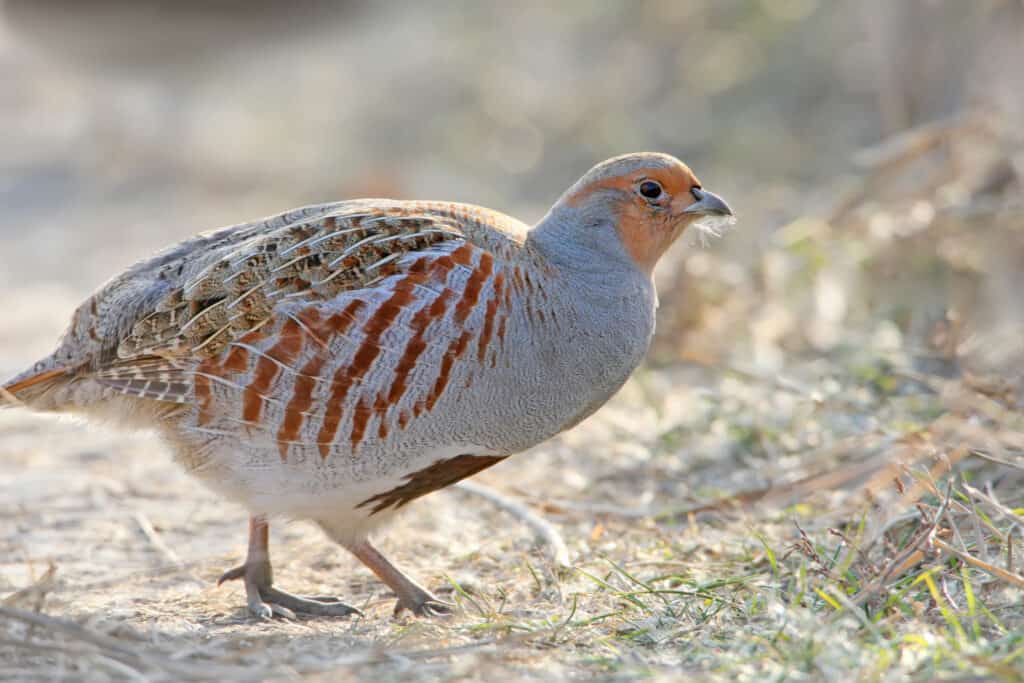
Some like to keep these birds around for lawn maintenance because they are quick to gobble up unwanted garden weeds, like dandelions.
©Voodison328/Shutterstock.com
The partridge is another ground-dwelling medium-sized bird in the Galliformes order. This bird is smaller than a pheasant but larger than a quail. They have a wide native distribution in Europe, Asia, and Africa, with some species now in the Americas. They live in forests or agricultural land in the wild. But species in the United States are primarily used as game birds. Farmers raise them in captivity to use for meat or they release them onto hunting grounds where others can hunt them. Their meat is lean with an aromatic, mild game flavor. Some like to keep these birds around for lawn maintenance because they are quick to gobble up unwanted garden weeds, like dandelions and their seeds.
Peafowls
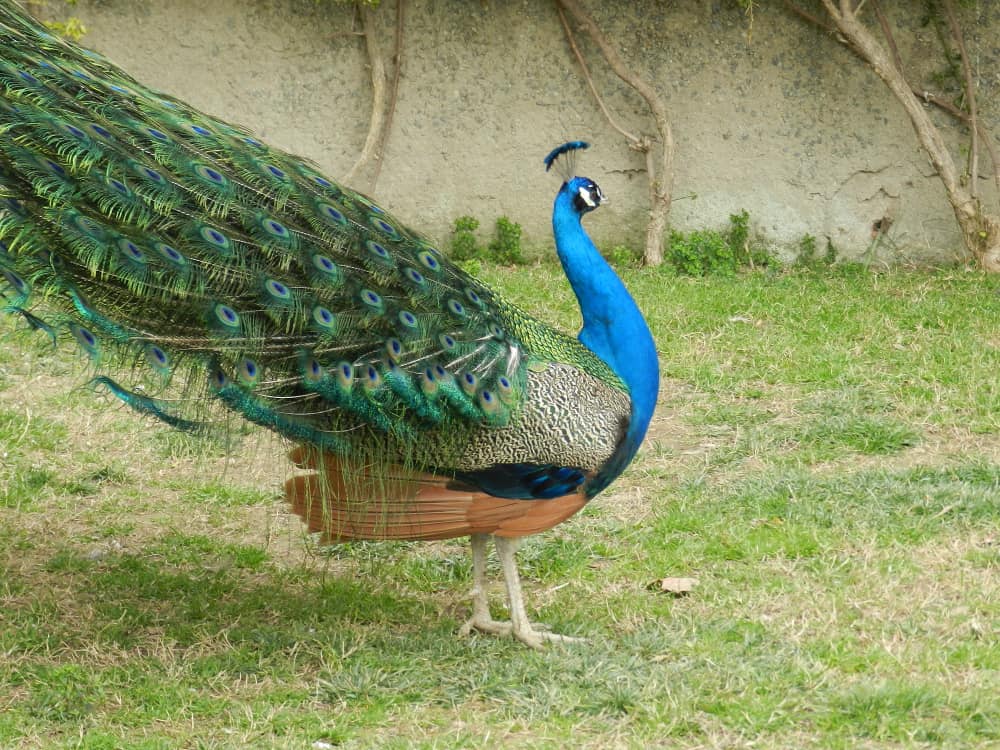
Many keep them as guards because, interestingly, these birds scream when they see intruders.
©Millie Bond – Copyright A-Z Animals
Peafowl is a term used to describe three species in the Phasianidae family. Male peafowls are known as peacocks. However, most people refer to both male and female peafowl as “peacocks.” You know them for their spectacular, brightly patterned feathers that fan out and quiver. Males display their ornately adorned feathers to show their physical fitness and to attract females. They are not the most common birds, but this species lives in captivity and also in the wild. While it is possible to eat the meat of a peacocks, this is not common. Many keep them as guards because, interestingly, these birds scream when they see intruders. In the wild, they prefer open lowland forests and agricultural fields.
The photo featured at the top of this post is © Sb616 / Creative Commons / Original
Thank you for reading! Have some feedback for us? Contact the AZ Animals editorial team.



